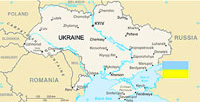Poroshenko will play up crisis easing ahead of elections

(Business New Europe – bne.eu – Teneo – October 14, 2014)
Signs of easing tensions will likely dominate the news this week, but progress on crisis resolution will likely be overstated and is unlikely to motivate a relaxation of EU/US sanctions against Russia.Signs of easing tensions will likely dominate the news this week, but progress on crisis resolution will likely be overstated and is unlikely to motivate a relaxation of EU/US sanctions against Russia.
Ukrainian President Petro Poroshenko will meet Russian President Vladimir Putin on 17 October. While no specific outcomes are expected, it will likely be presented as a positive sign. Similarly, the Russian leadership will likely follow through on its latest announcement of troops’ withdrawal from the Ukrainian border. Some progress on ceasefire implementation may also be announced and push negative news from the frontlines further to the background.
Playing the peace-maker Poroshenko will probably play up his meeting with Putin in the run-up to the general elections on 26 October. He has built his election campaign on his image as peace-maker and consensus-builder, and will use this opportunity to foster this message. However, in terms of specific outcomes, little is expected. Poroshenko is unlikely to meet Russian demands for the federalisation of Ukraine. This fundamental clash of interests continues to inhibit a compromise that could become a sustainable basis for crisis resolution.
Meanwhile, Moscow announced that troops stationed along the Ukrainian border will return to their permanent bases in the coming days. While this is the third announcement of this kind in recent months, it is likely that this time it will be followed by action due to the approaching winter. Still, a Russian withdrawal does not necessarily mean the end of hostilities in eastern Ukraine, as separatist units remain engaged in clashes with government forces. The battle for the Donetsk airport continues, and heavy fighting has been reported outside the port city of Mariupol this morning.
Finally, it is also possible that a progress on ceasefire implementation will be announced in the coming days, most likely in the form of an agreement on dividing the control of areas where the most recent clashes have been reported. While Kiev is keen to call the ceasefire a success before the elections are due, there seems to be a deepening rift among individual groups of separatists. News of a similar deal — under which separatists were to give up their attempts to regain Mariupol in exchange for some sections of territory currently under the government’s control — leaked on 10 October, leading to internal conflict in the separatist ranks. Clashes outside the city have intensified in the past 48 hours.
Overstating crisis resolution Overall, while some genuine easing is likely (e.g. the Russian withdrawal of troops) any news of progress on the ground should be taken with caution until after elections. The significance of positive developments may be overstated and there is little certainty that any potential deals will be respected by the separatists.
Similarly, the Russian withdrawal is unlikely to motivate a relaxation of EU/US sanctions at the end of this month. A more durable commitment to ending the crisis will be required to bring this about. Besides a sustainable peace deal, a constructive attitude towards Ukraine’s constitutional redesign will be the key factor. Economically, sanctions are now hurting both sides; however, political imperatives continue to dominate the debate.
